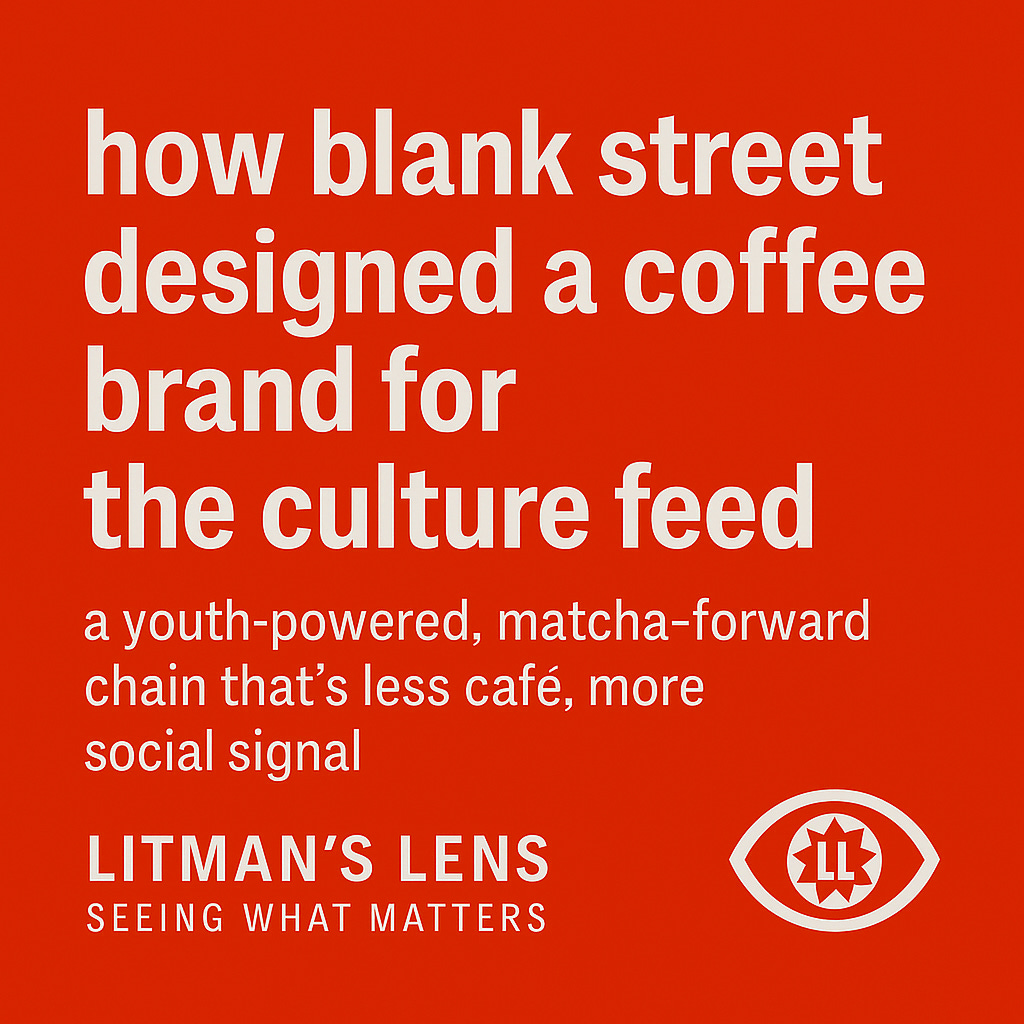how blank street designed a coffee brand for the culture feed
a youth-powered, matcha-forward chain that’s less café, more social signal
In just a few years, Blank Street has built what many brands dream of: a product that’s everywhere and a look that fits perfectly into the social feed. What started as a Brooklyn cart is now a $500 million chain with over 90 locations globally. But its growth hasn’t come from perfecting coffee. It’s come from something more cultural , designing drinks that travel through TikTok, not taste.
Blank Street didn’t just build cafés. It built a lifestyle that performs on camera, in hand, and on social.
matcha is the medium
Blank Street began as a coffee brand. But coffee alone wasn’t going to break through. What really took off was flavoured matcha — brightly coloured, syrup-laced, and engineered for the algorithm. Strawberry shortcake, cookies and cream, blueberry matcha - drinks built not just for sipping, but for the flex.
As co-founder Issam Freiha told The Wall Street Journal,
“Matcha is amazing for mixology. It’s something we can build way crazier, amazing flavors. We’ve barely scratched the surface.”
Today, matcha makes up about 50% of Blank Street’s business. That’s not a pivot. That’s a platform shift. The company isn’t selling caffeine. It’s selling culture in a cup.
every drink has a persona
What sets Blank Street apart isn’t the quality of its espresso shots or the artistry of its baristas. It’s the way the product looks, feels, and flexes online. As one Gen Z customer put it, “You’re not just getting matcha. You’re getting a vibe.”
The brand’s creative director told WSJ that every drink has a persona, complete with mood boards, music taste, and cultural references. The Aries latte? “Someone who hangs out in McCarren Park and listens to Charli XCX.” The cookies-and-cream matcha? “A Lower East Side Dimes Square boy.”
This isn’t just clever branding. It’s a taste engine, churning out character-driven drinks that give consumers something to perform with - and identify through.
design that fits the feed
Blank Street didn’t overcomplicate things. Its stores are minimalist, its pricing is slightly lower than Starbucks, and its interface - both physical and digital, is frictionless.
There’s an invite-only membership ($22/month for up to 14 drinks) that caused an online frenzy and got gamified on TikTok.
It’s scarcity meets routine meets shareability. And it works.
the new starbucks? or a new model entirely?
Starbucks built global ubiquity through consistency and lifestyle marketing. But its menu is bloated, and its stores have become background noise.
Blank Street flipped the script. It’s smaller, more nimble, and fully optimised for cultural velocity rather than café heritage.
It doesn’t need to be better than Starbucks. It just needs to be more now.
While Starbucks sells familiarity, Blank Street sells discovery. While Starbucks built loyalty through routine, Blank Street builds identity through novelty. In many ways, Starbucks is infrastructure. Blank Street is internet culture.
seeing what matters
In a world of overstimulated feeds, brands that look good in-hand, and even better on camera will win.
Blank Street understood that the modern café is a content platform. It didn’t fight for taste elitism. It engineered desirability. And it made matcha a signal.
✳️ If coffee became a lifestyle brand, what other everyday habits are up for reinvention? Subscribe to see what matters.



